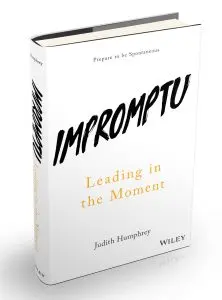Whether you’re speaking to a roomful of colleagues, your boss, or a group of friends, you can’t wait to draw people in. You either hook them with your first words, or you don’t.
Think of the expression that hooks people in as your “grabber.” It’s the prefatory line or phrase that basically says, “Listen up! You’re gonna want to hear this.” An effective grabber isn’t shouty or alarmist, though–it builds a bridge to your listener.
You can call them by name, mention something about them, refer to a point they’ve brought up, or reflect on a conversation you’ve had with them. You can even just ask them about themselves, or bring up something that you know interests them. The point of the grabber is to create rapport, so not only will it vary depending on whom you’re speaking to, it will also change according to the situation.
With that in mind, here are seven of the most common scenarios you’re likely to encounter at work, and the grabbers that are best suited to each.
1. When You Pass A Coworker In The Hall
If you run into a colleague in the hall and remember something you wanted to talk to them about, your grabber to get their attention might be, “You’re the very person I want to see!” or “I just heard something that will interest you,” or, “I want to run an idea by you, do you have a minute?”
Beware of grabbers that risk derailing what you have to say. For example, if you begin, “Ahmed, how’s your family?” he may launch into a long tale about his ailing mother. (You might genuinely be concerned! In which case, just save your empathetic inquiry for the end of your chat.) If you say to an executive, “I loved your town hall the other day,” she may go on to talk at length about her remarks. So make sure your grabber not only engages your audience, but also clears the way for your message.
2. When You’re Meeting One-On-One
If you’re in a one-on-one meeting and want to respond to a point your coworker or direct report has made, bridge to that. For example, “I understand where you’re coming from,” or, “I agree with your logic,” or simply, “That’s true.”
Don’t say, “Good point,” because you’re not there to judge the other person or evaluate the merit of their ideas (it can come off unintentionally condescending). In these situations, your grabber should simply show you’ve listened and take the other person’s idea seriously. Each time it’s your turn in an exchange, start with a fresh grabber that connects what you’re about to say to what you’ve just heard.
3. When You’re In A Group Meeting
If you’re in a group meeting, bridge to the conversation under way: “I believe we have two possibilities: choosing among the existing candidates or broadening our search.” If you want to bring a faltering discussion back on track, start with words that suggest consensus: “All of us have agreed that . . . ” or, “Time is running out and we need to make a decision.” In team meetings, it’s all about reaching out to your audience and finding common ground.
4. When You’re Approaching Someone Who’s Busy
If you’re worried you’re interrupting somebody’s focus, request (rather than assume you have) their ear. If your boss is at her desk staring at her computer, your grabber might be, “Do you have a second?” or, “Is this a good time to ask you something?” If you call someone by phone, start by asking if they’re able to talk. This is more than just good etiquette–it’s a way to make sure you’ve got their attention before you launch into whatever you’ve got to say.

5. When You’re Following Up On An Earlier Discussion
These situations are pretty easy: Your grabber should simply allude to whatever it was you spoke about before. For example, you might explain to your boss, “You asked me to interview the candidate for the VP position, and I’ve met with her.” In a coaching session with an executive, I might open with, “When we first met, you said you’d like to work on your presence. Let’s begin.” These opening lines will get your listeners’ attention simply by jump-starting their memory about the prior interaction you’re about to build on.
6. When You’re Disagreeing
When you want to take issue with what’s been said, your grabber always needs to show sensitivity. Don’t begin with, “I disagree” or, “on the contrary,” or, worse still, “I think you’re wrong.” And by all means avoid that tired cliché, “With all due respect.”
Instead, start with something more collegial: “I understand where you’re coming from. Let me share my perspective.” Or you might simply say, “Yes, and I see it somewhat differently.” Always reach out to your audience in a positive and constructive way. That shows you’ve been listening, which encourages others to listen to you in return.
7. When You’re Interviewing For A Job
A grabber is also important in high-stakes situations like job interviews. Bridge to the person interviewing you, either at the start or the end of the meeting (or both): “Thanks for taking the time to meet with me”–simple as that. You can even go one step further and say why you’re impressed with her company. Over the years I have interviewed many people for positions and always took notice of whether the candidate opened with comments about our company. I was more excited about interviewing someone who was excited about us.
Think of your grabber as a verbal handshake. It builds a connection with your audience and makes your listeners want to follow along. Once you’ve done that, you can get on with your message. You’ll have their attention and can lead the way.
This article is adapted with permission of the publisher, John Wiley & Sons, Inc., from Impromptu: Leading in the Moment by Judith Humphrey. Copyright© 2018 by John Wiley & Sons, Inc. All rights reserved. This book will be available this week at all bookstores and online booksellers.
Recognize your brand’s excellence by applying to this year’s Brands That Matter Awards before the early-rate deadline, May 3.
